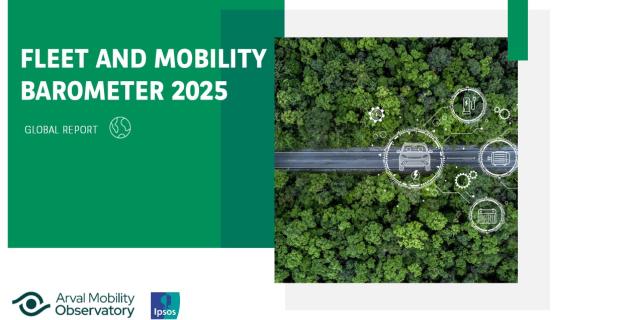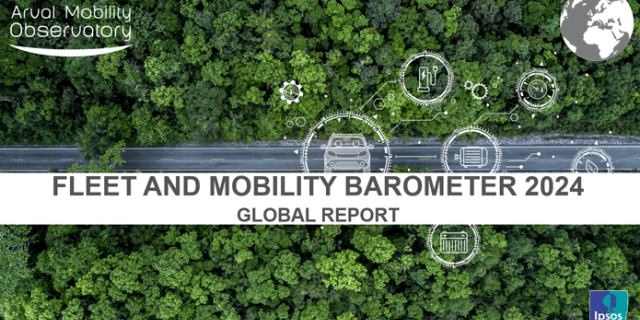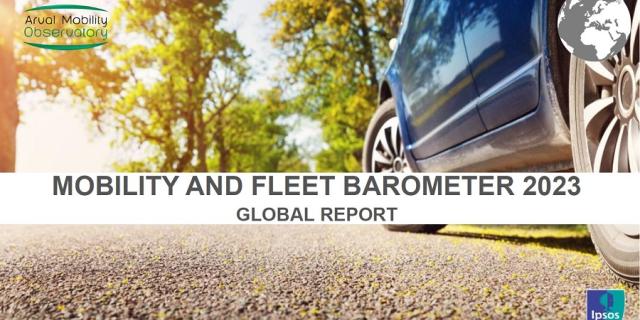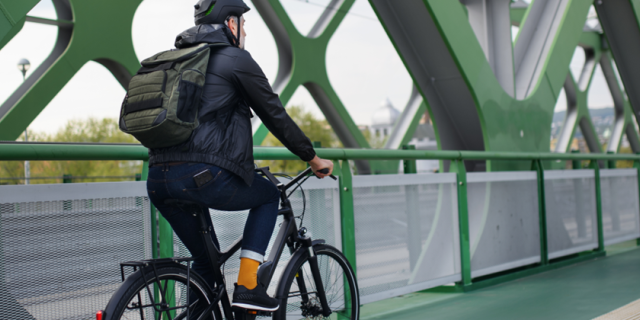European countries are making a serious effort to address environmental and public health concerns by reducing air pollution in urban centers. One of the measures they’re using to support this goal are low emission zones, commonly known as LEZ.
LEZ are designated areas where access is granted only to vehicles that meet certain emission standards. Although they have existed for nearly 30 years — the first such zones were introduced in 1996 in Stockholm — they have rapidly gained momentum in the past decade, with more than 300 LEZ currently spanning Europe.
In this article, we’ll look at the development, impacts, challenges, and future perspectives of LEZs in Europe. To gain a better understanding of their effectiveness and applicability, we’ll also discuss two case studies of LEZs in London and Barcelona.
The development of low emission zones (LEZ) in Europe
In many cities across Europe, air pollution levels exceed the latest recommendations by the World Health Organization (WHO). This carries significant health risks for local populations. The high concentration of vehicles in urban areas leads to a degradation of air quality is a key factor in this.
Traffic is the biggest source of air pollution in cities globally, responsible for 25% of particulate matter in the air, followed closely by combustion and agriculture (22%) and domestic fuel burning (20%). In Europe, this number is lower, with transportation contributing to 15% of air pollution on average; at the same time, in some European cities, shipping is responsible for up to 28% of particulate matter pollution.
By focusing on the vehicles that emit the most pollutants, LEZs aim to tackle the pollution problem directly, leading to quick and noticeable improvements.
What are low emission zones — and why did they become important?
Poor air quality is linked to various health hazards, such as respiratory diseases, heart conditions, and premature deaths. According to the European Environment Agency, 253,000 premature deaths occurred in 2021 due to chronic exposure to fine particulate matter.
In this context, LEZs emerged as a means to encourage the use of cleaner vehicles and alternative modes of transport, such as cycling and public transit.
Low emission zones (LEZs) are areas in cities where only vehicles meeting certain emission standards can enter. Typically, this changes mobility patterns, favoring bicycles, electric and hybrid electric cars and vans, and other low-emission vehicles. Specific requirements for acceptable emission levels vary by country and by zone.
Vehicles that emit higher levels of pollutants, such as older cars and trucks, are either banned or charged a fee to enter these zones.
Zero emission zones (ZEZs) also exist, although they’re rarer; only zero-emission vehicles can enter those areas, meaning that all internal combustion engine vehicles are barred from entry. London is one of the cities that have taken the lead on ZEZs.
The primary goal of LEZs and ZEZs is to improve air quality by reducing emissions of harmful air pollutants that are harmful to human health and the environment, such as nitrogen oxides (NOx), particulate matter (PM10), and fine particles (PM2.5).
Particulate matter and air pollution
There are different categories of particulate matter, depending on the size of the particles (i.e. on their aerodynamic diameter). Fine particles (PM2.5) have an aerodynamic diameter equal to or less than 2.5 micrometers, while particulate matter (PM10) refers to particles of less than 10 µm in diameter. The particles themselves have varying chemical, physical, thermodynamic, and morphological features, which makes them complex to study and understand.
Sources of particulate matter range from human activities (such as those related to industry, agriculture, and transportation) to natural events (f.e. forest fires, volcanic eruptions).
Measurements of particulate matter are often used to assess air quality.
Traffic contributes to particulate matter pollution in cities across the world to varying degrees, ranging from 5% to 61%, at an average of 27%. Such particles come from vehicles’ combustion engine and are released in the atmosphere via their tailpipe; but they are also released from braking systems and tyres abrasion.
The emergence of LEZs in major European cities
The emergence of Low Emission Zones (LEZs) in major European cities marks a significant step towards promoting environmental sustainability. Here are some key examples:
- Stockholm is often credited with introducing the first LEZ in Europe in 1996. The city targets heavy-duty vehicles and buses with compression ignited engines (mainly diesel engines).
- London introduced its LEZ in February 2008, focusing initially on heavy diesel trucks and buses to reduce exhaust emissions, as a part of a broader strategy by Transport for London to improve air quality. Currently, this LEZ covers most of Greater London, enforcing minimum emission standards and imposing charges on non-compliant vehicles.
- Berlin also introduced its LEZ in 2008, focusing on reducing particulate matter and nitrogen oxide levels. Older, more polluting vehicles cannot enter the central parts of the city.
Many other European cities have adopted Low Emission Zones (LEZs) as part of their strategies to reduce air pollution and promote cleaner air, such as Lisbon, Oslo, Amsterdam, Milan, and more.
Legislative frameworks and policies driving the establishment of LEZs
At the EU level, air quality standards are set by the Ambient Air Quality Directive (2008/50/EC). Member states are required to meet these standards and limit pollutants like nitrogen dioxide, fine particles (PM2.5), and particulate matter (PM10).
This framework encourages national governments and local authorities to use LEZs as a tool to reduce the health and environmental risks of air pollution and promote the electrification of vehicles.
Individual countries and cities — including European countries that aren’t members of the EU, such as Norway and Switzerland — have developed specific policies and regulations to guide the operation of LEZs.
Local policies govern the criteria for vehicle emissions, the types of vehicles affected, enforcement mechanisms, and the geographical boundaries of the zones.
In parallel to that, the European emission standards for vehicles become more and more strict; Euro 6e, a recent iteration of the Euro 6 standard, imposes stringent controls on vehicles’ emissions of nitrogen oxides and particulate matter at tailpipe, while Euro 7 (currently awaiting approval by EU member states) will further tighten these limits. These standards align with LEZ objectives and facilitate the enforcement of LEZ regulation by categorizing vehicles based on their emission levels beyond exhaust emissions.
Key impacts of low emission zones
Let’s now look into some of the main impacts of LEZs on urban environments, transportation systems, mobility patterns, and public health. The key impacts of LEZs include:
- Reductions in air pollution levels and improvement in air quality: By restricting the most polluting vehicles from entering designated urban areas, LEZs decrease the concentration of harmful emissions. For example, in German cities, the implementation of LEZs has led to reductions in annual mean PM10 and NO2 concentrations by up to 7% and 4%.
- Positive effects on public health and well-being: Cleaner air results in lower incidences of respiratory diseases and better heart health; studies on the impact of LEZs have demonstrated a more pronounced effect on cardiovascular disease. This contributes to overall better public health and could reduce healthcare costs.
- Effects on transportation infrastructure and urban mobility patterns: Low emission zones encourage the use of cleaner vehicles, low-polluting public transport alternatives, and alternative modes of transport, such as walking and cycling. This, in turn, helps promote physical activity among local populations.
- Economic implications: The initial financial burden for individuals and businesses might be significant, as they need to upgrade their vehicles to meet emission standards. But overall, LEZs’ benefits outweigh those costs in the long run. Additionally, LEZs create market demand for cleaner vehicles.
By giving people and organizations a strong incentive to upgrade to newer, less polluting vehicles, LEZs also contribute to reducing greenhouse gas emissions and combating climate change.
Challenges and criticism of LEZ
Low emission zones (LEZs) face various challenges and criticisms, such as:
- Enforcement and compliance issues: Monitoring and ensuring adherence to LEZ rules can be a tough task for local authorities. They might struggle to identify non-compliant vehicles or meet public resistance.
- Socio-economic impacts on marginalized communities: LEZs may disproportionately impact lower-income communities who rely on older, more polluting vehicles, exacerbating inequalities. To mitigate this, France had previously implemented a “social leasing” measure, giving access to affordable leasing options for electric vehicles to low-income families, while some EU countries (like Germany and The Netherlands) offer tax incentives to companies for the purchase of EVs.
- Business impacts: Upgrading fleets and providing employees with alternative means of transport might put a financial strain on companies, and especially those in the logistics sector.
- Technological limitations and the need for infrastructure development: Effective LEZ implementation requires upgrading urban infrastructure and providing more alternative transport options. Additionally, original equipment manufacturers (OEMs) need to constantly monitor and adapt to new regulations — and anticipate market demand and future restrictions.
Case studies: London, Barcelona, and French LEZs
Let’s now look at two examples of how cities tackle the challenge of LEZs: London and Barcelona.
London: A phased approach leading to successful outcomes
London is one of Europe’s pioneering cities in the successful creation and implementation of a LEZ, which has been in place since 2008. The city has used a phased approach and a gradual tightening of standards, which allowed businesses and locals time to adjust.
Since 2019, London also has an ultra-low emission zone (ULEZ), which has helped reduce emissions by 26% since its enforcement.
London’s example demonstrates the potential of policy-driven environmental improvement even in large and densely populated cities.
Barcelona: Multiple delays before the launch of a LEZ
The Barcelona Metropolitan Area is still struggling to implement LEZs consistently and at scale: The Catalan government has made concessions to have LEZs cover 25% of the total urban area, rather than of each city.
Barcelona's implementation of its LEZ has been delayed multiple times and was finally implemented in 2020 for the area within its ring roads. The city has cautiously progressed towards a LEZ and now restricts petrol vehicles registered before January 2000 and diesel vehicles registered before January 2006.
Currently, the LEZ in the city of Barcelona is enforced on business days, i.e. from Monday to Friday and from 7 am to 8 pm.
The difficulty in implementing LEZs often stems from concerns over economic impacts on businesses and individuals relying on older vehicles. This is an illustration of the challenge of striking the right balance between environmental goals and socio-economic factors.
French LEZs: A flexible approach
In France, the low emission zones (known as zones à faibles émissions (ZFE) in French) have been adapting to improvements in air quality, leading to a more flexible approach to vehicle restrictions, based on real-time data and actual progress.
Recently, the Ministry of Ecological Transition announced that the mandatory schedule for low-emission zones will be relaxed for some cities that currently have LEZs in place, such as Rouen, Marseille, and Strasbourg. For Paris and Lyon, the previously established schedule remains in place.
Perspectives and future directions for the development of LEZs in Europe
Since their introduction in the late 1990s, low emission zones (LEZs) have significantly expanded across Europe, growing in number and scope. There were more than 320 LEZs in the EU in 2022 and the number is expected to reach 507 by 2025.
Initially focused on reducing emissions from heavy-duty vehicles in a few cities, LEZs now encompass a wide range of vehicle types, including cars, buses, and motorcycles, in numerous urban areas.
With air quality still a significant concern in many European cities, there is clearly room for improvement — and the proliferation of LEZs (both in terms of geographic coverage and strictness) could help with this.
To realize LEZs’ full benefits while mitigating potential drawbacks, concerted urban planning efforts are necessary; additionally, policy makers need to ensure those zones do not disproportionately affect lower-income populations and small businesses. This can be achieved through:
- Using a phased approach to introducing and tightening restrictions
- Implementing different support mechanisms, such as subsidies for cleaner vehicles or alternative modes of transportation
- Encouraging businesses to implement sustainable mobility policies for their employees
- The expansion of cycling and pedestrian infrastructure
In this way, LEZs can become a key element of cities’ broader sustainable transportation strategies and help improve both air quality and the quality of life of local populations.













